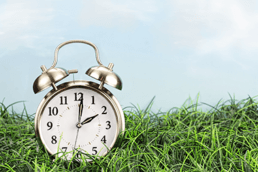Does Daylight Savings Affect Crime Rates?
We all enjoy the extra hour of sunlight now that Daylight Savings has been implemented for the start of the spring season. Just think how much more you’ll love that extra hour of sunlight when you hear how it’s helping your neighborhood reduce crime! Researchers have determined that the extra hour of ambient light gained by “springing forward” during daylight savings time also helps to decrease the rate of certain crimes.
As we all know once Daylight Savings begins there is more light later and later into the day. In a study conducted at Stanford, ambient light is directly correlated with a drop in crimes categorized as socially damaging which include, robbery, murder, and rape. Ambient light is defined as the natural light present in an area. It is thought that the reason for this decline is due to the increase in light which makes it easier for criminals to be identified, and therefore increases the risk of getting apprehended after committing these crimes. The degree of this decline is significant not only in improving safety, but also in saving $550 million per year with regards to the collateral costs of these crimes.
The study calls for additional research to be conducted in order to get more positive proof of these initial findings. It is further suggested that increasing ambient light in high crime neighborhoods (like the installation of working streetlights) may also help to reduce crime rates in these areas. Light management through the use of illuminance meters is critical in determining how bright the lights need to be in order to be effective. There is a point of diminishing return where excessive light does not increase effectiveness and only wastes power. Portable illuminance meters like the T-10A would be an easy way to accomplish this since they are capable of measuring the degree of illumination as it hits a specific location.










